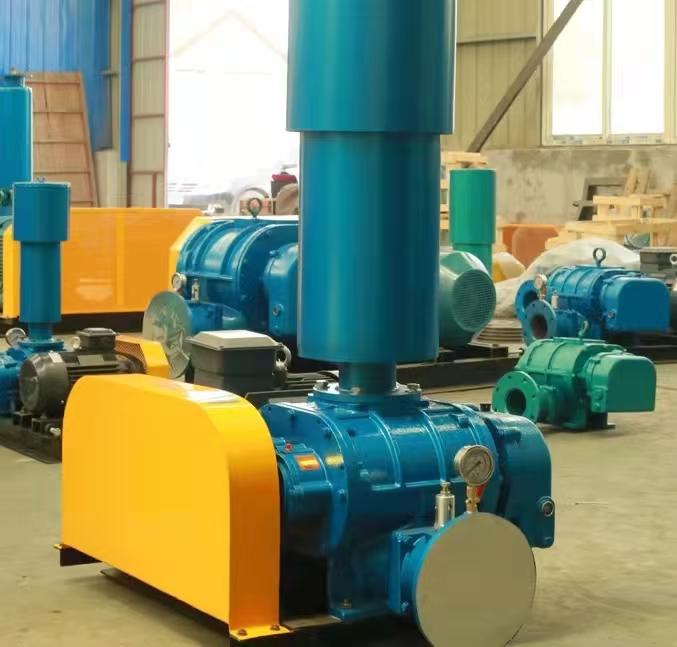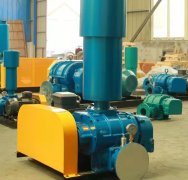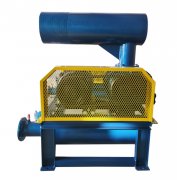Roots blower aerator is a device that uses forced air supply to achieve oxygenation. It is widely used in aquaculture, sewage treatment and other fields. The following analysis focuses on its working principle, application scenarios, selection points and maintenance:
1、 Working principle and advantages
The Roots blower aerator uses a pair of synchronously rotating impellers to create a low-pressure area inside the chassis where air is drawn in and a high-pressure area where it is discharged. It uses forced air supply to inject oxygen from the air into the water, thereby increasing the dissolved oxygen content in the water. Its core advantage lies in constant air volume and stable pressure, which can provide continuous and stable oxygen supply even under complex working conditions. It is particularly suitable for high-density aquaculture, circulating water aquaculture and other scenarios with strict requirements for dissolved oxygen.
2、 Application scenarios
aquaculture
Pond oxygenation: In pond aquaculture, Roots blower aerators inject air into the water through an aeration system, significantly increasing the dissolved oxygen in the water and providing a good living environment for aquatic organisms such as fish and shrimp, effectively improving aquaculture density and yield.
Circulating aquaculture: In the circulating aquaculture system, the Roots blower aerator drives water circulation, allowing water to continuously flow between the aquaculture tank, filtration equipment, and oxygenation equipment, maintaining stable water quality and aerating the water to meet high-density aquaculture needs.
High density aquaculture: suitable for high-density aquaculture environments such as turtles and blackfish, especially in high temperature weather where the oxygen content in the water decreases. The aerator can provide additional oxygen to help aquatic organisms maintain normal respiration and digestive metabolic activities.
sewage treatment
Aeration tank oxygen supply: In sewage treatment processes such as activated sludge method, Roots blower aerator blows air into the aeration tank to provide sufficient oxygen for microorganisms, enabling them to decompose organic matter in sewage and achieve the goal of purifying water quality.
Stirring and mixing: By generating airflow to stir the sewage, the pollutants in the sewage are fully mixed with the treatment agent to improve the treatment effect.
3、 Key selection points
Matching air volume and pressure
Aquaculture area and water depth: Large and deep aquaculture ponds require higher air volume and pressure to ensure sufficient dissolved oxygen and water mixing effect. It is recommended to choose Roots blower aerators with higher air volume and pressure, such as SR50-200 and other models.
Number of aeration plates: A large number of aeration plates means that a larger air volume and higher pressure are required to ensure that each aeration plate can work properly. It is necessary to select the corresponding model of Roots blower aerator according to the number and layout of aeration plates, and ensure that the fan power matches the fan model.
Water quality and aquaculture demand
Pond with poor water quality: A Roots blower aerator with stable performance and sufficient exhaust is needed to increase the redox potential and dissolved oxygen content of the water, ensuring the improvement of water quality and the healthy growth of aquaculture organisms.
Ponds with good water quality: Roots blower aerators with moderate pressure and air volume can be selected to meet basic oxygenation needs.
Power matching and reliability
Wind turbine power matching: It is necessary to ensure that the wind turbine power matches the wind turbine model to avoid the situation of "a small horse pulling a big car". If the power of the fan is insufficient, it will cause problems such as fan overvoltage and motor overcurrent, which will affect the aeration effect and equipment life.
Choose a well-known brand: It is recommended to choose a manufacturer with rich experience in oxygenation for purchase and technical guidance, to ensure that the selection and use of Roots blower aerators meet actual needs.
4、 Maintenance and upkeep
Lubrication and Cleaning
Regularly check the lubrication condition: ensure smooth operation of all components and replace lubricating oil regularly.
Clean the air inlet filter: prevent blockage and keep the equipment clean.
Component inspection and replacement
Regularly inspect belts and bearings: replace worn parts in a timely manner to avoid equipment failure.
Long term shutdown protection: If the fan is not used for a long time, diesel or lubricant should be added to the rotor for protection.
Operation monitoring and adjustment
Pay attention to the operating temperature of the motor: ensure stability and avoid overheating that may damage the equipment.
Adjust the tightness of the V-belt: After running the new machine for 24 hours, it needs to be adjusted once, and then adjusted again after a week. In the future, pay attention to observation and check in a timely manner if any abnormal noise or high current is found.



